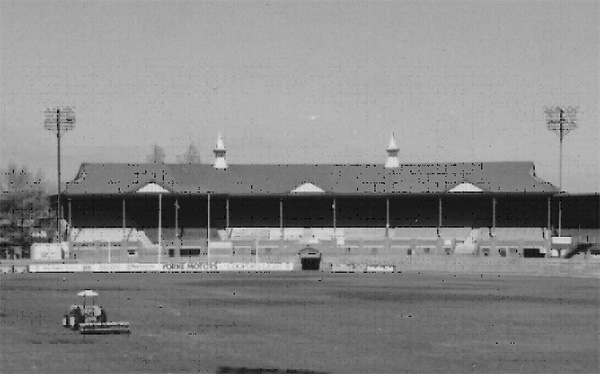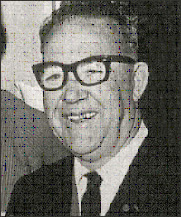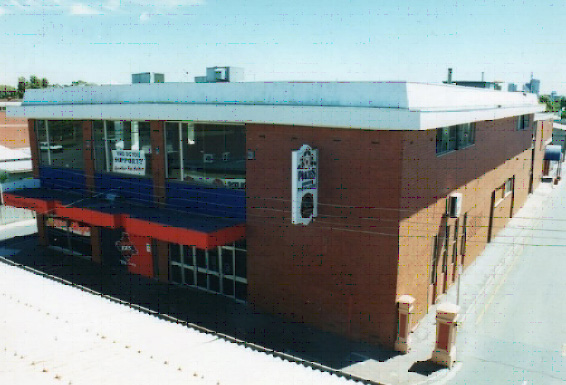1951 Lights at the Oval
Norwood Oval was the first suburban oval to erect light towers and led to the oval becoming a pioneer
venue for night football and other sports, especially baseball in the 1950’s, 60’s & 70’s.

1952 Hopalong Cassidy
The popular American cowboy Hopalong Cassidy (William Boyd) and his white horse, Topper, entertained thousands of fans on the oval in 1952 and was a very successful fund-raiser for the Crippled Children’s Association.

1953 Centenary Pavilion
Due to the increase use of the oval following the erection of floodlights, the Centenary Pavilion was built to accommodate more spectators.
It was named to celebrate the centenary of the Kensington & Norwood Council which is the oldest local government council in Australia.

 1954 Night football
1954 Night football
A night football competition, The Advertiser Cup, was played at Norwood Oval. Norwood won the cup in 1956 and 1958 and the series continued to 1961.Night football on the national stage is the basis for the AFL and it all began at Norwood Oval.
Glenelg rover, Stan Wickham rode a bicycle onto Norwood Oval in a gesture to Journalists who wrote that he would need a bike to keep up with the Norwood rovers. He was charged by the SANFL with misconduct and suspended for one game!
The Redex Reliability Trial attacted huge crowds leading to traffic jams in the streets of Norwood. Competitors’ cars were parked on the playing surface of Norwood Oval.
1955 Players’ race
The players’ race was installed from the Sir Edwin T Smith Pavilion to the oval. These races were installed at all suburban grounds as a consequence of clashes between players and spectators at the 1954 grand final between Port Adelaide and West Adelaide.
A new scoreboard was erected by Hallweld Limited at the northern end of the oval and was later extended to display other SANFL scores and also horse racing results.

1959
In February, a professional exhibition tennis match was held between Lew Hoad and Ken Rosewall, with Hoad winning 5-7, 7-5, 6-4.
1962 The Essery Stand
The Centenary stand was extended northwards and was named after William Essery Jnr., a local builder, former Mayor, club committeeman from 1913 - 1938 and a much-admired club patron from 1949 – 1973.
 1963 Renovations
1963 Renovations
The Norwood Football Club took great strides in its history when major renovations were made to its change rooms and social clubrooms. The redevelopment was considered by SANFL officials to be the best of its kind in the State. Alterations were also made to the League, Seconds, Thirds and committee rooms, and a new room for the Colt’s team and an Umpires’ room were made available in the Centenary stand.
Norwood could boast in having a social room and change facilities equal to anything in Australia. These developments were all due to the hard work of Club President, Mr Bert Baulderstone & his committees.
1966 International Rugby
On 11 May 1966 the touring British Lions rugby team defeated a South Australian team 38 -11
1964
Popular Sydney singers Col Joye, Judy Stone and Sandy Scott were among the artists at a concert on Norwood Oval compered by radio station 5AD disc jockey Bob Francis.
1968 The Redlegs Club
The Redlegs Club was officially opened in Woods Street on March 12 with all social & administrative activities transferred from the oval premises.
The huge area under the Sir Edwin Smith Pavilion was completely fitted out as a gymnasium for the benefit of the players.
A world double wicket cricket competition was held on Norwood Oval on 14th October 1968, with Australia defeating the West Indies.

1969 Players race and Mini-league
The Norwood & Kensington Corporation constructed an underground players’ race from the Sir E T Smith grandstand corridor to the playing arena. Both competing teams shared the race to enter and leave the arena.
The Coca Cola sponsored Mini-League competition commenced on April 5th with the first match at Norwood Oval on April 26th. The under 11 age school teams played two seven minute halves with modified rules across the oval using portable goalposts.
1971
The oval was the controversial venue for the South African Rugby Union team’s match against South Australia when anti-apartheid demonstrators using smoke bombs invaded the pitch to try and stop the game.
Norwood and Port Adelaide attracted a record post-war match crowd of 20,280 on May 22.
1972 Removal of cricket pitch
The cricket wicket square was removed which significantly improved the oval as a football venue and the East Torrens Cricket Club moved to Campbelltown Oval. The club had played their matches on the Norwood oval for 71 years.
1973 SANFL Finals at Norwood Oval
When the final five finals system was used for the first time, two matches were played on the Norwood oval. Norwood were involved in both games, defeating Port Adelaide in the Elimination final on Sept. 8th , but were defeated by North Adelaide by five points the following week in the first semi-final.
The SANFL headquarters, Football Park at West Lakes became the principal oval for league football in 1974.
1974 Norwood Oval facelift
The oval received a major upgrade with grandstands, fences, corridors and changerooms repaired and painted.
The three impressive flagpoles on the Edwin T. Smith pavilion, a feature since 1929, were removed for safety reasons. To assist captains to determine the strength and direction of the wind, a windsock was erected on the south-eastern mound.